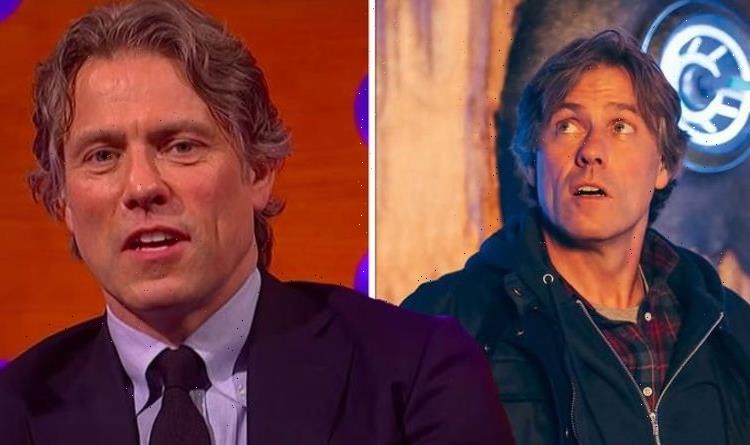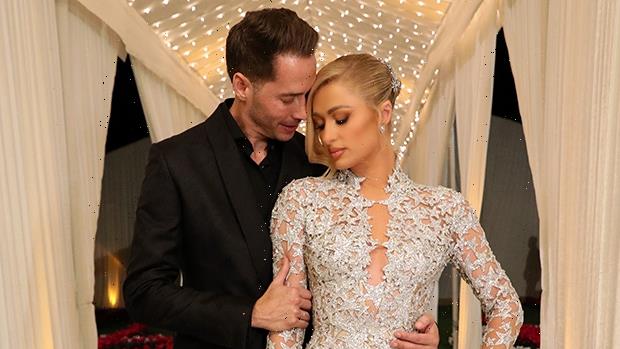“While the events of this story are fictional…These. People. Existed.”
This declaration is seen in the first few seconds of Netflix’s The Harder They Fall — a gun-toting, heist-heavy cowboy movie from Jeymes Samuel that introduces the masses to several Black figures from the Old West, led by a star-studded, all-Black primary cast including Idris Elba, Jonathan Majors, Regina King, Lakeith Stanfield, Delroy Lindo and Zazie Beetz.
While cinematic history does include a handful of Black Westerns, classic American Western films created a mythological Wild West where minorities were either racially stereotyped or not seen at all — so it’s no wonder many fans and Hollywood notables see The Harder They Fall as a breath of fresh air, and have offered heaps of praise.
It’s receiving its fair share of criticism, too, partly for colorism, around the casting of light-skinned Beetz as Stagecoach Mary, who is believed to have been a dark-skinned woman. (Samuel had previously filmed a Western in 2013 called They Die at Dawn, with Erykah Badu cast as Mary.)
But it’s also being called out for another offense: that of Indigenous "erasure.”
“It seems the casting director Victoria Thomas refused to cast an indigenous man for the movie,” tweeted one user, slamming the film for being released during Native American Heritage Month.
Five men the characters from #TheHarderTheyFall were based off of were #NativeAmerican/#AfroIndigenous, but it seems the casting director Victoria Thomas refused to cast an indigenous man for the movie… And the nerve for it to be released during #NativeAmericanHeritageMonth
— The Most Hated Man In America (@TMHMIA) November 3, 2021
“Where are the native peoples at in The Harder they Fall? Wasn't the whole backstory was that the Rufus Buck gang was in Indian Territory?” noted another Twitter user.
Where are the native peoples at in The Harder they Fall? Wasn't the whole backstory was that the Rufus Buck gang was in Indian Territory? They were Black/Creek and multiracial and rapey. Going to finish tomorrow. I’m not feeling the erasure. I hope the plot fixes this.
— Shout-Out Mapes (@Margari_Aziza) November 5, 2021
“Would have liked to see more historical accuracy regarding Idris Elba’s character,” someone added. “When you look up Rufus Buck you learn he actually fought to push whites out of Native territory.”
The Harder They Fall truly gave everything it needed to give in the form of an action movie. Would have like to see more historical accuracy regarding Idris Elba’s character. When you look up Rufus Buck you learn he actually fought to push whites out of Native territory.
— ΙΦΘ Beta Tau | Mizzou Iotas (@MizzouIotas63) November 7, 2021
Some believe the film missed a rare opportunity to showcase the shared experiences of Black and Indigenous folks in the Wild West, especially through the portrayal of Elba as Rufus Buck, a larger-than-life mixed-race outlaw with Creek ancestry whose self-named gang was composed of Black and Creek Indian members. Further prompting upset is that one non-Black gang member of color in the film — a man named Cortez (played by Mexican American actor Julio César Cedillo) — meets an early end in the two-hour-plus movie.
In fact, Samuel’s world, say some, is one that erases the Indigenous roots of characters and the significance of Black and Native relations in U.S. history, all for the sake of creative liberty.
Netflix representatives had not responded to Yahoo Entertainment's request for comment at the time of publication.
“Rufus Buck is half Native American,” Robert Collins, associate professor of American Indian Studies at San Francisco State University and co-curator of the Smithsonian’s IndiVisible: African-Native American Lives in the Americas, tells Yahoo Life. “His gang looked white, Black and Creek — and that not only gives you a sense of what they looked like, but also the dynamics of the Creek Nation at that time. People in Native nations came in all shades, like in the Americas — a small microcosm of the United States — and that is something that is missed in the movie.”
Real life Rufus Buck gang. Circa 1895 pic.twitter.com/57Ox48P2Lt
— N’Diaye (@kwes_Adjei) November 11, 2021
Collins adds that Buck and his crew were barely out of their teens when they did their misdeeds — a contrast from the “calm,” older Buck as presented by Elba.
“One of the things that raises is the extent in which they could have told [Buck's] story in accuracy, and that has always been the big thing about American film,” Collins says. “The extent we are actually true to history and the extent in which it is merely a realm for people to tell stories.
“But if we get trapped in that," he continues, "we miss the story that is being put out, which is relevant for Black America. And that has always been the catch-22: How do we explain in reality what we have not socially accepted yet? We may not be able to reconcile our racial consciousness with how these people looked.”
Indigenous faces are hardly seen in movies and on television shows, according to the 2020 Hollywood Diversity Report (the most recent available) from the University of California Los Angeles. The report found that Native Americans made up only 0.3 percent of all top film roles in 2018, followed by a small increase to 0.5 percent in 2019. As for Native directors and writers of top films, the report indicated that there was 0 percent in 2018 and in 2019.
An October 2020 letter from the Writers Guild of America West’s Native American & Indigenous Writers Committee called out Hollywood for its lack of representation.
“There are currently lead actors and series regulars cast in Native American roles with no legitimate Native American background or heritage,” the letter reads. “This occurs because our industry’s top decision makers — fellow union writers, producers, studio heads — continue to overlook and ignore the hiring of Native writers, directors or producers, who inherently come with an understanding of our community's nuance, cultural protocols and have our accurate representation in mind.”
Indigenous people are often left out of conversations regarding equity and inclusion, with Cree singer and icon Buffy Sainte-Marie recently telling Yahoo Life, "In BIPOC [Black, Indigenous, People of Color], sometimes the ‘I’ gets lost.”
But while Collins says critics are “spot on” for calling out the lack of representation for Native and other minorities, he wonders if these naysayers understand the full breadth of their sentiments.
“Do we know what African and Native-American mixed blood actually looks like?” Collins wonders. “Not only in the past, but also in the present?”
He continues, “If we had cast people how they actually looked, some African Americans would not feel a connection to those individuals.”
Collins stressed the need for taking an “integrative approach to history” — being inclusive of all people’s history in the narrative.
“Chinese, Filipino and a lot of people we see in Black neighborhoods, they were in these towns as well, because they were facing a lot of that discrimination as well,” says the educator. “That train track was built by a Chinese dude, so then to not have them in these towns that connected the railroads… [is] kind of problematic… really problematic.”
But inaccuracies aside, Collins — like so many others — still finds himself enjoying the The Harder They Fall, even calling for a sequel in hopes that more of the complete story is told.
“Always think [filmmakers are] feeding you a big horse apple about history — and then go find out if [they are] lying,” he says. “This film should inspire us to look up who these people were and how they really lived — especially because of that disclaimer in the beginning.”
Source: Read Full Article



